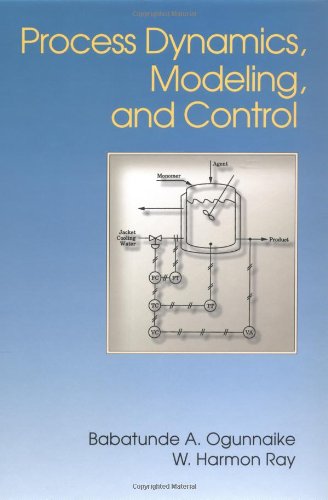Process Dynamics, Modeling, and Control pdf download
Par schwartz shiela le samedi, août 27 2016, 03:42 - Lien permanent
Process Dynamics, Modeling, and Control by Babatunde A. Ogunnaike, W. Harmon Ray


Process Dynamics, Modeling, and Control Babatunde A. Ogunnaike, W. Harmon Ray ebook
Page: 1296
ISBN: 0195091191, 9780195091199
Publisher: Oxford University Press, USA
Format: pdf
In this paper, we promote Gaussian process dynamical systems (GPDS) as a rich model class that is appropriate for such analysis. Harmon Ray English | 1994 | ISBN: 0195091191 | 1296 pages | PDF | 25.70 MBProcess Dynami. Subjects: Machine Learning (stat.ML); Learning (cs.LG); Systems and Control (cs.SY). CPS integrates the dynamics of the physical processes with those of the software and networking, providing abstractions and modeling, design, and analysis techniques for the integrated whole. Process Dynamics, Modeling, and Control (Topics in Chemical Engineering) Download Filehost: Uploaded.net, Rapidgator.net by Babatunde A. First, the model had to be created by manipulating the process and collecting historical data on the process dynamics: Some step changes were applied in the manipulated variable and disturbance variables. Process Dynamics, Modeling, and Control (Topics in Chemical Engineering)by Babatunde A. Embedded computers and networks monitor and control the physical processes, with feedback loops where physical processes affect computations and vice versa. To begin, we describe the Households are also a target for disease control strategies such as cocoon vaccination, which aims to provide a protective environment for newborns by vaccinating their parents (Coudeville et al. Cite as: arXiv:1207.2940 [stat.ML]. In particular, we present a message passing algorithm for approximate Comments: Appearing in Advances in Neural Information Processing Systems (NIPS), 2012. The time dynamics of a treatment regimen therefore become very complex. The economic and societal potential of such systems is vastly such as cars, toys, medical devices, and scientific instruments. 1.3: In this paper, we propose a parsimonious individual-based model of household composition and dynamics, developed for the purpose of exploring interaction between demographic processes and patterns of infection and immunity. The system model included all reachable sets and slowly added model predictable controls to optimize performance with the learning process.